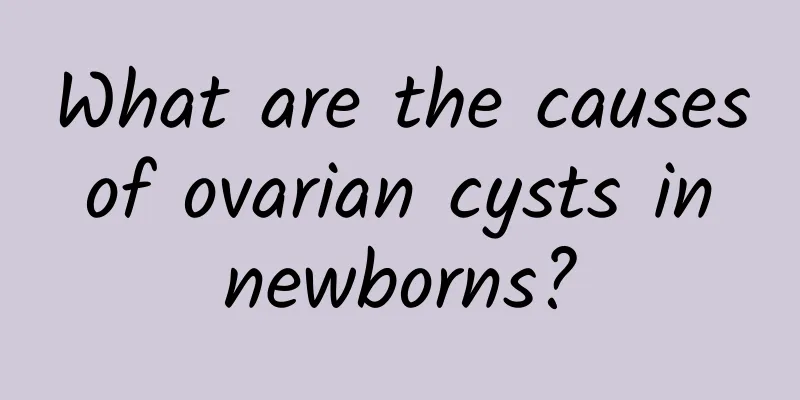What are the causes of ovarian cysts in newborns?

|
Ovarian cysts in newborns are usually related to the influence of maternal hormone levels, abnormal ovarian development of the fetus itself, or other health factors. Although most of them are benign, they still need to be closely monitored to rule out potential risks. From the perspective of genetic factors, neonatal ovarian cysts are usually less related to genetics, but if there is a history of related abnormal reproductive system diseases in the family, the risk of similar problems may increase. Environmental factors are mostly related to certain conditions of the mother during pregnancy. For example, pregnant women have received ovulation induction treatment, long-term use of high-hormone drugs, or abnormal estrogen levels in the body, which may affect the fetus through the placenta. Physiologically, the formation of functional cysts due to hormone fluctuations during neonatal ovarian development is more common, such as excessive response of the fetal ovaries to maternal estrogen. At the same time, maternal thyroid dysfunction, gestational diabetes, etc. may cause fetal endocrine disorders, which can also lead to the occurrence of cysts. Pathological causes such as genetic mutations in ovarian development, inflammatory reactions caused by lymphatic effusions, or fluid accumulation in the ovarian cysts caused by restricted blood circulation may all cause more complex types of cysts. If an ovarian cyst is found in a newborn, different treatments should be adopted according to the type of cyst and the specific situation. Regular ultrasound monitoring is generally recommended, and some functional cysts will be absorbed on their own without intervention. If the cyst is large or there is a risk of complications such as torsion or rupture, minimally invasive surgical treatment may need to be considered, such as cystectomy or cyst drainage. For pathological cysts, other imaging tests and laboratory evaluations may be needed to clarify the cause, and hormone regulation therapy may be required if necessary. Parents need to pay close attention to the baby's physical changes, take the newborn to the pediatric department for regular follow-up, and explain any abnormalities to the doctor. Most ovarian cysts can be prevented from causing more serious problems through early intervention. Paying attention to balanced nutrition and not taking medications at will during pregnancy can effectively reduce the risk of fetal developmental abnormalities. At the same time, maternal health management also plays an important role in prevention. |
<<: Can I eat millet porridge if I have cervical hypertrophy?
>>: Is there a high chance of miscarriage due to uterine malformation?
Recommend
How to regulate irregular menstruation during lactation? What drugs can treat irregular menstruation?
Generally speaking, new mothers will have menstru...
What is the difference between premenstrual signs and early pregnancy? You need to know these
When women have their period, their bodies will s...
Does adnexitis affect fertility?
Does adnexitis affect fertility? Generally speaki...
How to prevent uterine effusion
How can women prevent uterine effusion? In our cl...
What are the typical symptoms of ectopic pregnancy?
What are the main symptoms of ectopic pregnancy? ...
The best abortion hospital in Beijing!
Beijing abortion hospital rankings are the best h...
What causes Trichomonas vaginitis?
Trichomonas vaginitis is a type of vaginitis. We ...
Is having two periods a month considered irregular menstruation?
Irregular menstruation is generally defined as a ...
What is the cause of vulvar leukoplakia?
What is vulvar leukoplakia? What is the cause of ...
Does congenital absence of vagina affect pregnancy and childbirth?
Does congenital absence of vagina affect pregnanc...
How is pelvic inflammatory disease diagnosed?
How is pelvic inflammatory disease diagnosed? Pel...
The main clinical manifestations of irregular menstruation symptoms
Among the many diseases of gynecological inflamma...
The weight loss code of the 12 zodiac signs: Pisces is prone to gaining weight again
After entering autumn and winter, the lower tempe...
Can patients with adenomyosis eat seafood?
Can patients with adenomyosis eat seafood? Patien...
Women with cervical hypertrophy will basically experience menstrual symptoms
Women with cervical hypertrophy will basically ha...









